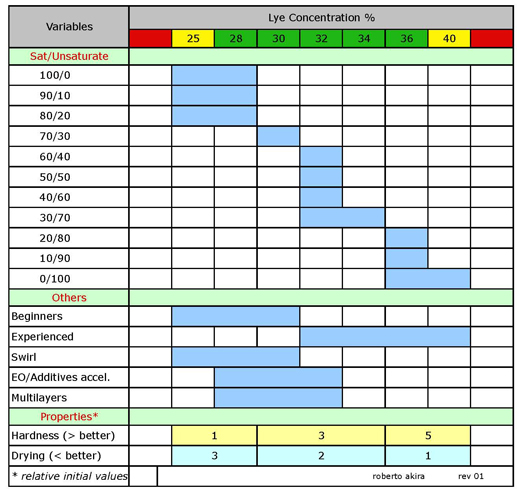Ditto everything Kchaystack said.
To explain further, the reason why I (and many others) master-batch a 50% lye solution this way is because it really does simplify things. If it didn't, I definitely wouldn't do it, I can assure you (I'm always looking for an (upstanding) easy way out of things if possible, lol).
The main way in which it simplifies things for me is that it cuts out the 1 step that is the most annoying and that takes me the most time to do when making a batch of soap. When I mix my lye solution, I go the extra mile with safety precautions, not only in the protective gear I wear, but also in making sure my mixing area will be free and clear of other living beings for a certain amount of time. My hubby especially doesn't appreciate being anywhere near my mixing vicinity when I mix lye - even for hours afterwards (he hates the smell of it, and he has a nose like a bloodhound or a pregnant woman that can smell the lingering effects of it long after everyone else has ceased to detect it).
If I had to go through that kind of rigmarole
every time I felt the call of the stick-blender, it would drive me to frustration and I would cease to love making soap so much anymore. Mixing up one large master-batch at a time to last me through several batches of soap has been a life saver for me.
Why a 50% solution specifically, instead of a 33% or a 40%, for example? Because the math is easy (see- I'm looking for that easy way out again! lol)
To explain, when I make soap, I don't always use the same lye concentration every time. Although I mostly like to use a 33% solution, sometimes I use higher concentration than that and sometimes I use lower depending on my formula and/or FO. If I were to make up a large 33% master-batch solution and then one day decide I wanted to make a soap with a 31.5% lye solution, I would drive myself insane trying to figure out how much of my master-batch solution to weigh out and how much extra water to add to it in order to convert it over to 31.5%. I'm just not that masochistic and self-loathing. lol
A 50% lye solution is made up of equal parts of lye and water by weight: 50% lye and 50% water, which makes the math of converting the master-batch solution to a different % solution childsplay. All that it takes to convert the 50% solution to whatever concentration I desire is to perform a simple 2-part math equation that any 1st-grader can do (or even kindergartener) and that works the same every time across the board no matter what different solution % I wish to convert to. It's my favorite kind of math equation, and it only takes a mere 5 seconds to do!.
So, whenever I feel the call of the stickblender, I take 5 seconds to do the math equation for my batch, take my jug of lye solution and weigh out the proper amount, and then I weigh out the proper amount of extra water, and proceed with soaping. I don't have to clear the house, I don't have to take extra precautions against the fumes (because there aren't any fumes), I don't have to wait for the solution to cool down, etc...). It's just a win/win method for me in every way.
HTH!
IrishLass



















































